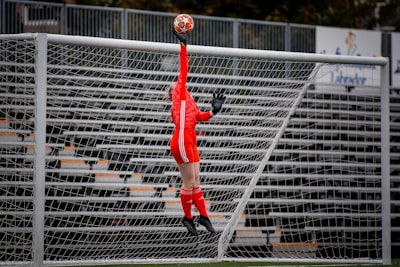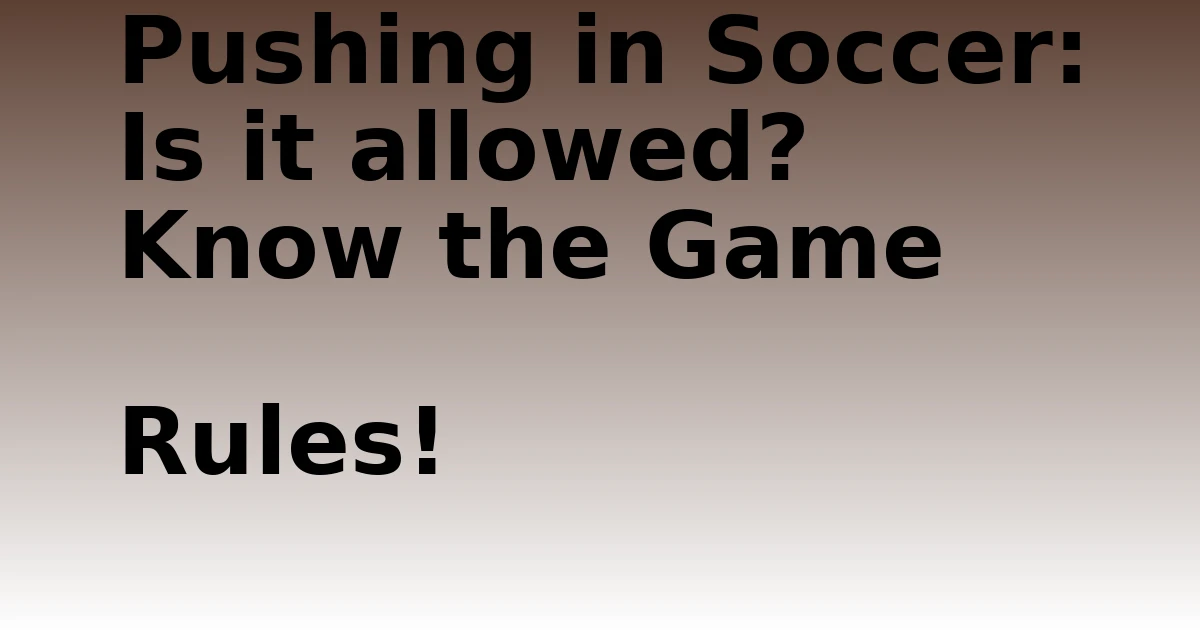Are you looking to take your soccer game to the next level? Do you want to impress your teammates with your knowledge of the rules and regulations of the game? If so, this expert guide is just what you need. It has all the information you need to know about soccer goals regulations.
From understanding the dimensions of a regulation goal to learning how many players are allowed in the penalty area, this guide will help you become an expert on soccer goal regulations.
With this guide, you can be sure that you have all the information necessary to ensure that your team plays by the game’s laws and impresses everyone with their knowledge.
Understanding the rules that govern soccer goals is essential for anyone who plays the game coaches it, or follows it as a fan. This will ensure that the game is played in a manner that is both fair and safe for all players.
Soccer Goal Regulations
Different federations, like US Youth Soccer and FIFA, have rules about how big soccer goals can be and what they can be made of. Your team needs to know these rules to ensure they play within them.
This comprehensive guide will cover everything you need to know about the regulations that govern soccer goals, including the standard dimensions of a goal, the specific sizes recommended for various age groups, and the number of players on a team.
To begin, it is essential to understand the different parts that make up a soccer goal. A crossbar is placed behind the goal line and connects the two goal post that makes up a soccer goal.
The goal line is the line that denotes the end of the playing field and is the line that the ball has to travel behind for it to be counted as a goal. The crossbar is in the middle of the goal and runs horizontally between the goalposts.
The goalposts and the crossbar have nets attached to catch the ball when it is kicked into the net.

The International Federation of Football Associations (FIFA), the organization that oversees international soccer, establishes the parameters for a soccer goal’s standard size.
A rectangular consisting of two uprights posts spaced 8 yards (24 feet) apart, and a horizontal crossbar that is 8 feet (2.44 meters) high are the requirements for a soccer goal per the regulations established by FIFA. The posts and crossbar may be round or elliptical also.
Both the width and depth of the crossbar and goalposts must be 5 inches (12 centimeters). All international games must follow these rules for goals, so if you want to play in an international match, you need to have goals that meet these rules.
However, the regulations governing soccer goals can change depending on the level of play and the organization that governs the sport. For instance, the goal size requirements set forth by Youth Soccer, the governing body of school clubs in the United States, are slightly different from those of FIFA.
Youth Soccer Goal Size by age group
The following is a list of the recommended sizes for soccer goals, broken down by age group, provided by US Youth Soccer:
- U6-U8: 6 feet wide by 18 feet long
- U9: 6.5 feet wide by 18.5 feet long
- U10: 7.5 feet wide by 21 feet long
- U11: 8 feet wide by 24 feet long
- U12: 8.5 feet wide by 24 feet long
- U13-U14: 8.5 feet wide by 24 feet long
It is important to note that US Youth Soccer and the National Federation of State High School Associations (NFHS) have different recommendations, but both organizations generally have similar dimensions. Despite these differences, it is important to note that both organizations have similar recommendations.
Rules of Soccer Goals by team Sizes
It is essential to remember that the size of the soccer goal is determined in part by the number of players on the team. The following are the recommended dimensions for soccer goals based on the size of the team:
- 4v4: 6 feet wide by 18 feet long
- 7 vs. 7: 6.5 feet wide by 18.5 feet long
- 9v9: 7.5 feet wide by 21 feet long
- 11v11: 8 feet wide by 24 feet long
It is important to note that the dimensions listed here are merely recommendations and not rules and may differ depending on the league, tournament, or local authority.
FIFA Soccer Goals Regulations Materials
Giving thought to the components that make up soccer nets is also essential. According to the regulations of the Fédération Internationale de football association, the goalposts, the crossbar, and the net all need to be made of approved materials. These materials can include wood, metal, or plastic.
White paint must be applied to the goalposts and crossbar, and the safety net must be made of white or colored netting that is not hazardous to the players.

The goalposts and the cross-bar must also be round or elliptical, and the height of the lower edge of the crossbar must not exceed 5 inches (12 centimeters) above the playing surface.
It is essential to point out that the colors of the goals are significant for visibility purposes, which are to the advantage of both the players and the referee. White paint must be applied to the goalposts and crossbar, and the safety net must be white or colored netting that is not hazardous to the players.
This makes it easier for both the players on the field and the referee to determine whether or not the ball has crossed the goal line by ensuring that the goal is visible to both groups. It also keeps the players from getting hurt by the sharp or dangerous edges of the goal.
Rules for Goalkeepers
It is also important to note that goalkeepers must adhere to rules that govern the goal area when playing soccer. The goalie is not allowed to use their hands anywhere outside the designated goal area, which is the area defined by the goal posts and crossbar, as well as the ground within a distance of one yard from each goalpost. This rule is under the Game Laws.

Within the goal area, the goalkeeper is required to adhere to a certain set of rules. If you know these rules, it will be easier for you to follow them and ensure that your team plays by them. By doing this, we ensure that the goalkeeper doesn’t have an unfair advantage over the other players.
It is necessary to have a thorough understanding of the soccer goal regulations to guarantee a fun and risk-free game for all participants. The dimensions and components of the goals must adhere to the rules set forth by organizations like FIFA and US Youth Soccer.
It is essential to be aware of these regulations and to use a goal that is of an appropriate size for the level of play being played as well as the ages of the players. It is important to keep in mind that the goal must be painted white and constructed of materials that have been approved for the players and the referee to be able to see it.


